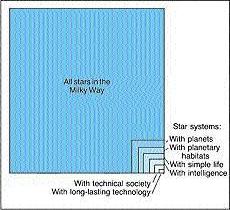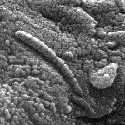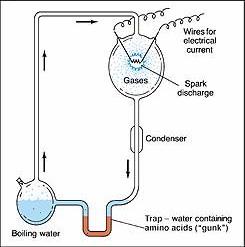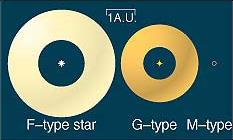|
What Happened on Earth?
- 4.6 Gyr ago: Formation of the
Earth.
- 4.5-4 Gyr ago: Chemical evolution:
- At first, atmosphere formed from H, N, C, O degassing; Then,
those gases combined into CH4,
NH3, CO2,
H2O molecules.
- 3.9 Gyr ago: Heavy asteroid
bombardment that resurfaced the Earth.
- Shortly afterward, 3.85-3.65 Gyr ago:
Life and biological evolution started. Blue-green algae.
- How did it happen? Possibilities:
1: Energy from radiation, lightning,
volcanoes, meteorites led to complex molecules (aminoacids, nucleotides),
the basis for life; 2: Complex organic
molecules came from space, possibly on comets or dust grains
(panspermia) – after all, we do have meteorites from Mars.
- 2.1 Gyr ago: Amoebas, multicellular
organisms in the oceans.
- 400 Myr ago: First life on land.
- A few Myr ago: Early Homo sapiens.
- 100,000 yr ago: Homo sapiens
sapiens.
- 10,000 yr ago: Agriculture;
then cultural evolution, aided by language, toolmaking, ...
- Extinctions: It is generally
believed that the K/T extinction 65 Myr was caused by an impact,
and others may have been as well; Another astronomical possibility
is UV radiation from the Sun after ozone layer depletion by a
nearby supernova's gamma rays (has been suggested for the Ordovician
extinction 440 Myr ago).
|

|







![]()